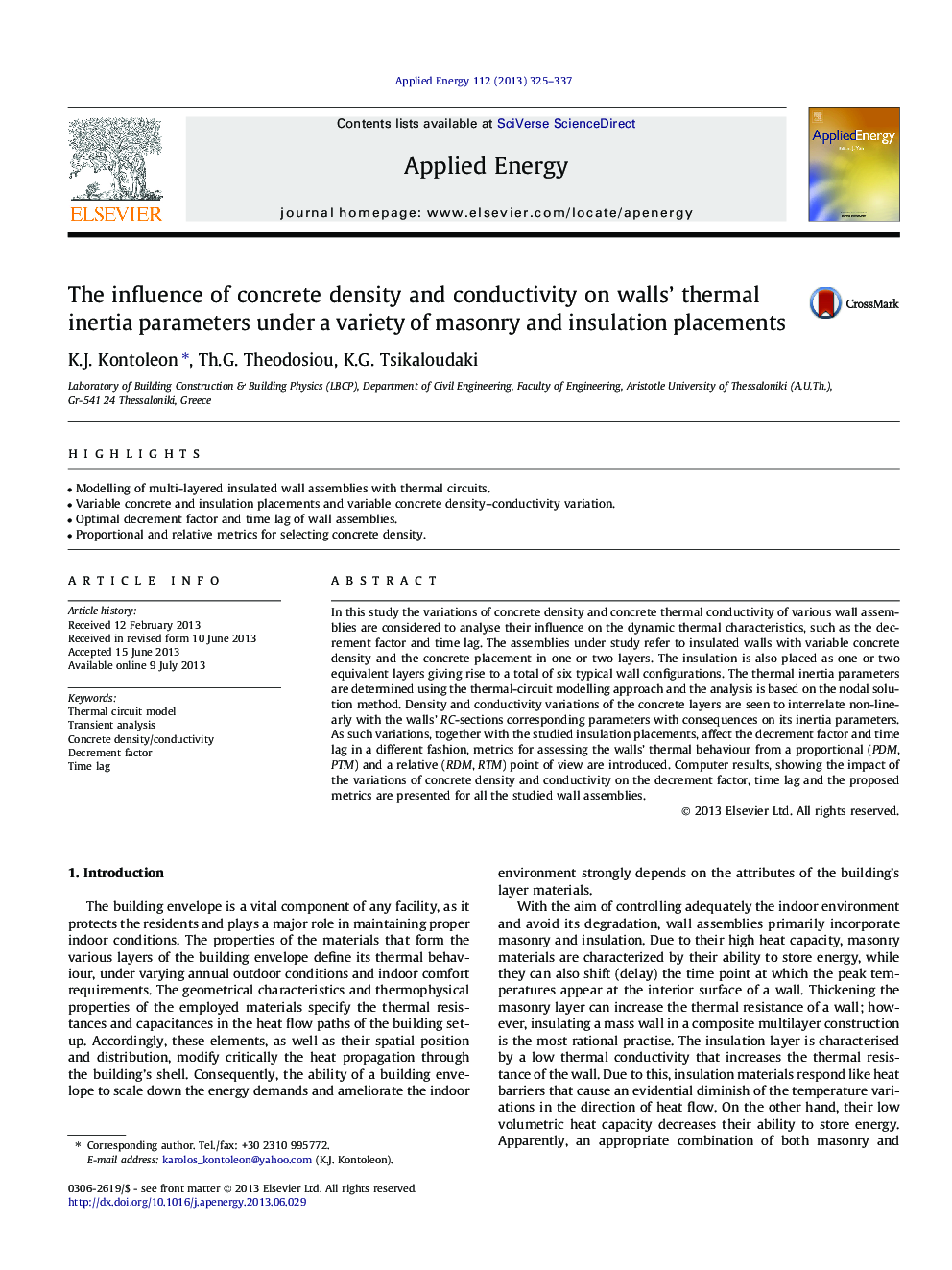| Article ID | Journal | Published Year | Pages | File Type |
|---|---|---|---|---|
| 242905 | Applied Energy | 2013 | 13 Pages |
•Modelling of multi-layered insulated wall assemblies with thermal circuits.•Variable concrete and insulation placements and variable concrete density–conductivity variation.•Optimal decrement factor and time lag of wall assemblies.•Proportional and relative metrics for selecting concrete density.
In this study the variations of concrete density and concrete thermal conductivity of various wall assemblies are considered to analyse their influence on the dynamic thermal characteristics, such as the decrement factor and time lag. The assemblies under study refer to insulated walls with variable concrete density and the concrete placement in one or two layers. The insulation is also placed as one or two equivalent layers giving rise to a total of six typical wall configurations. The thermal inertia parameters are determined using the thermal-circuit modelling approach and the analysis is based on the nodal solution method. Density and conductivity variations of the concrete layers are seen to interrelate non-linearly with the walls’ RC-sections corresponding parameters with consequences on its inertia parameters. As such variations, together with the studied insulation placements, affect the decrement factor and time lag in a different fashion, metrics for assessing the walls’ thermal behaviour from a proportional (PDM, PTM) and a relative (RDM, RTM) point of view are introduced. Computer results, showing the impact of the variations of concrete density and conductivity on the decrement factor, time lag and the proposed metrics are presented for all the studied wall assemblies.
